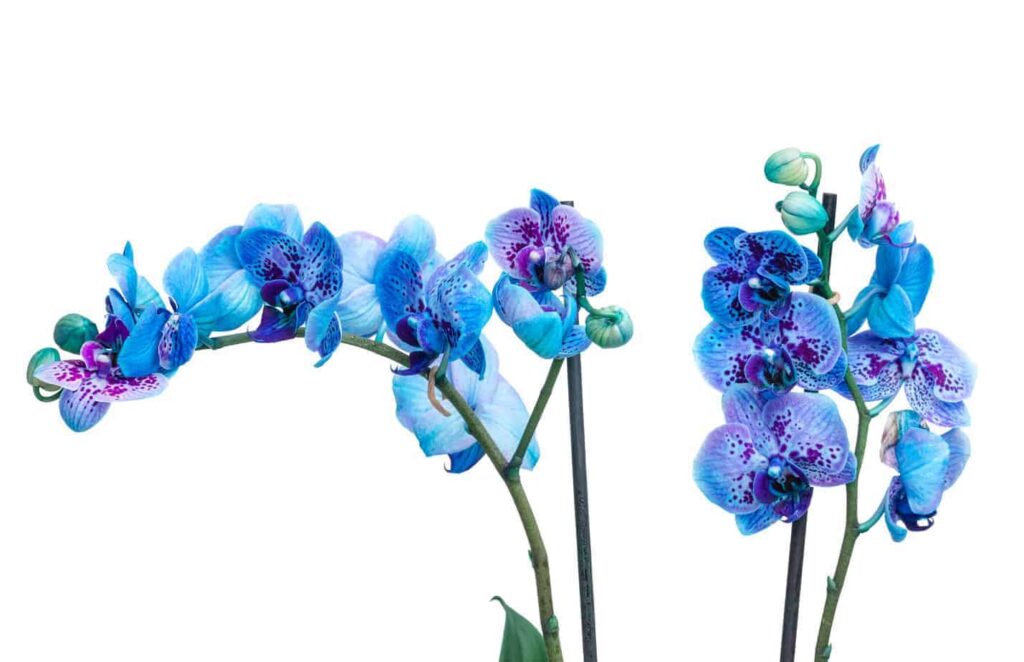Introduction
Blue orchids have long captivated the hearts of plant enthusiasts and gardeners alike. Their striking color and unique appearance make them stand out among other flowers, symbolizing rarity, elegance, and mystery. While orchids themselves are often associated with beauty and sophistication, blue orchids take this to another level, offering a mesmerizing hue that is both enchanting and rare in the natural world. This article will delve into the fascinating world of blue orchids, exploring their origins, care requirements, symbolic meanings, and how to successfully cultivate them in your garden.
The Enigmatic Blue Orchid: Origins and Varieties
The allure of blue orchids begins with their origins. Orchids belong to the Orchidaceae family, one of the largest and most diverse families of flowering plants, with over 25,000 species and more than 100,000 hybrids. However, true blue orchids are exceptionally rare in nature. Most blue orchids found in the market are not naturally blue but are dyed to achieve the striking color.
One of the few naturally occurring blue orchids is the Vanda coerulea, also known as the blue vanda or blue orchid. Native to the northeastern regions of India, Burma (Myanmar), Thailand, and southern China, this species thrives in tropical climates and is renowned for its vibrant blue petals, which can range from pale sky blue to deep cobalt. The blue vanda is a testament to nature’s ability to produce extraordinary beauty in even the most unexpected places.
Another notable variety is the Thelymitra crinita, commonly known as the Queen Orchid or Blue Lady Orchid, native to Australia. Unlike the blue vanda, the Thelymitra crinita has a more subtle blue hue and a delicate, almost ethereal appearance. These orchids are less commonly found in home gardens but are highly prized by collectors and enthusiasts.
Symbolism and Cultural Significance of Blue Orchids
Blue orchids hold a special place in various cultures and traditions around the world. Their rarity and unique color have led to associations with themes of mystery, spirituality, and transformation. In the language of flowers, blue orchids symbolize rarity and uniqueness, making them a perfect gift for someone special or a cherished addition to a garden designed to inspire awe and admiration.
In some cultures, blue orchids are believed to bring peace and tranquility. The calming blue hues are thought to promote relaxation and meditation, making them an ideal choice for spaces intended for rest and reflection. Additionally, blue orchids are often associated with creativity and inspiration, believed to stimulate the imagination and encourage artistic expression.
Cultivating Blue Orchids: Tips and Techniques
Successfully growing blue orchids requires understanding their specific needs and creating an environment that mimics their natural habitat. Whether you choose a naturally blue orchid like the Vanda coerulea or a dyed variety, the following tips will help you cultivate these exquisite plants in your garden or home.
Light and Temperature
Blue orchids thrive in bright, indirect light. Too much direct sunlight can scorch their delicate petals, while insufficient light can hinder their growth and flowering. A spot near an east or west-facing window with filtered light is ideal. If you are growing your orchids indoors, consider using grow lights to supplement natural light, especially during the shorter days of winter.
Temperature is another crucial factor in orchid care. Blue orchids generally prefer warm temperatures, with daytime highs between 70-85°F (21-29°C) and nighttime lows around 60-70°F (15-21°C). Maintaining a consistent temperature range will help your orchids flourish and produce stunning blooms.
Humidity and Watering
Orchids, including blue varieties, thrive in high humidity environments. Aim for a humidity level of 50-70%, which can be achieved by using a humidifier, placing a humidity tray with water near your orchids, or misting them regularly. Proper air circulation is also essential to prevent fungal infections and ensure healthy growth.
Watering blue orchids requires a delicate balance. Overwatering can lead to root rot, while underwatering can cause dehydration and stress. Water your orchids thoroughly when the top inch of the growing medium feels dry to the touch, allowing excess water to drain away completely. It’s generally better to underwater slightly than to overwater.
Growing Medium and Fertilization
The right growing medium is vital for the health of your blue orchids. A well-draining mix, such as a combination of bark, perlite, and sphagnum moss, will provide the necessary support and aeration for the roots. Avoid using regular potting soil, as it retains too much moisture and can suffocate the roots.
Fertilizing your blue orchids is essential for promoting robust growth and vibrant blooms. Use a balanced orchid fertilizer, diluted to half-strength, and apply it every two weeks during the growing season. Reduce fertilization frequency during the dormant period in fall and winter.
Repotting and Maintenance
Orchids generally need repotting every 1-2 years, or when the growing medium breaks down and loses its effectiveness. Repotting provides an opportunity to refresh the growing medium, inspect the roots for signs of rot or damage, and move your orchid to a slightly larger pot if needed.
Regular maintenance, such as removing dead or yellowing leaves, trimming spent flower spikes, and inspecting for pests, will help keep your blue orchids healthy and thriving. Common pests include spider mites, aphids, and scale insects, which can be treated with insecticidal soap or neem oil.
Conclusion
Blue orchids are a true testament to the wonders of nature, offering a unique combination of rarity, elegance, and captivating beauty. Whether you are an experienced gardener or a novice enthusiast, cultivating blue orchids can be a rewarding and enriching experience. By understanding their specific needs and providing the right care. You can enjoy the mesmerizing blooms of these extraordinary plants in your garden or home. Embrace the challenge and delight in the beauty of blue orchids. And let them inspire a sense of wonder and tranquility in your surroundings.


